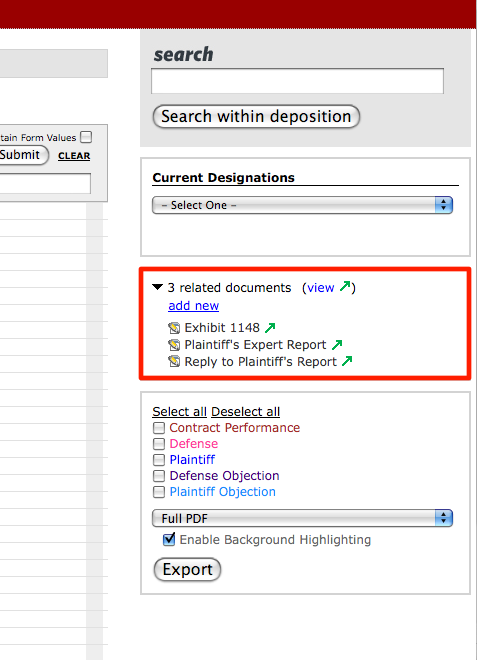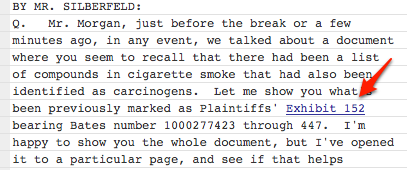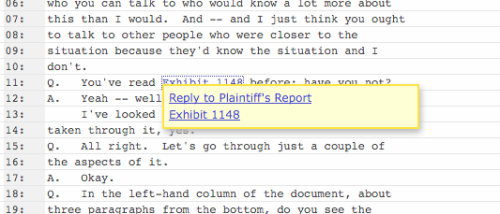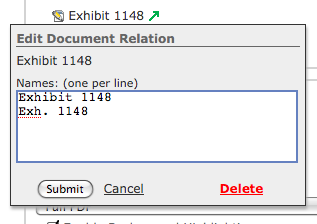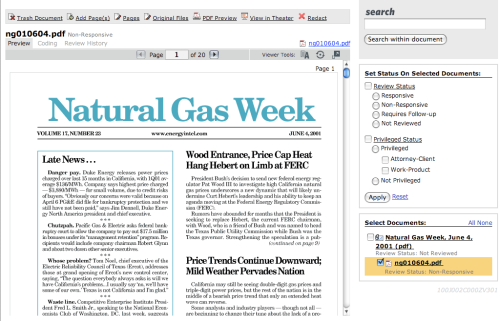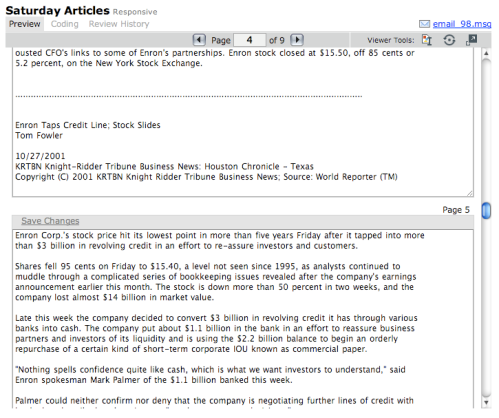As part of our most recent release, we’ve added support for the LEF file format, allowing you to upload the transcript text, video sync information, exhibits and related transcript text in a single package. Since this is just one of the many formats that we already support, importing LEF files is the same simple deposition import process you’re used to.
A big component of LEF support is the ability to link deposition text to an exhibit, allowing you to quickly navigate from the deposition to the relevant exhibit. You’ll see the related exhibits on the right hand side of the deposition editor.
Once the text has been linked up, you’ll see that the specified text in the deposition is now a link and will open the related exhibit in a new window.
In the situations where multiple exhibits relate to the same text, you’ll see a drop down box with all of the related exhibits for that snippet of deposition text.
We’re also giving you the option to edit the related exhibit. You can specify one or more snippets of text to link the exhibit, as well as delete the relationship itself.
As it was before, relating an exhibit to a deposition is done by choosing the related deponent from the document editor rather than just relating the deposition to the exhibit. We felt this was the right relationship here, as depositions themselves may be a series of volumes for a single deponent, which will be associated with the same set of exhibits.
So, whether you’re looking for LEF support, or a simple way of linking exhibits to deposition text, this feature should take care of exactly what you need.
